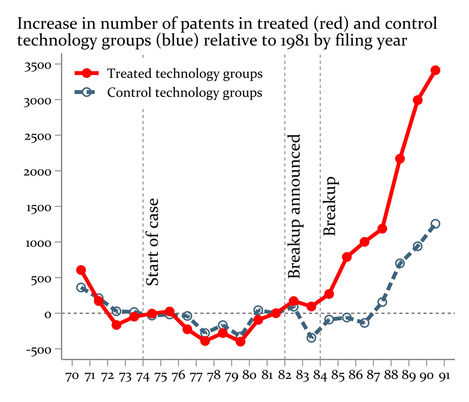|
Welcome!
I am a Professor of Economics at the University of Münster and a research affiliate at CEPR and CESIfo. I am also a Director at the Münster Center for Economic Policy and a Research Professor at the REACH EUREGIO Start-up Center. I am working on the relation of competition and innovation and the role of science for the innovation process. You can find my CV here. |
Selected Publications
Buchheim, Lukas, and Martin Watzinger. “The Employment Effects of Countercyclical Public Investments.” American Economic Journal: Economic Policy, 15 (1) (2023): 154-73.
Coverage: Ökonomenstimme
Schnitzer, Monika, and Martin Watzinger. "Measuring the spillovers of venture capital." Review of Economics and Statistics 104.2 (2022): 276-292.
Coverage: VoxEU
Furman, Jeff, Markus Nagler, and Martin Watzinger. “Disclosure and Subsequent Innovation: Evidence from the Patent Depository Library Program.” American Economic Journal: Economic Policy 13 (4) (2021): 239-70.
Coverage: AEA Chart of the Week, Brookings, VoxEU, Matt Clancy’s New Things Under the Sun
Watzinger, Martin, Thomas A. Fackler, Markus Nagler, and Monika Schnitzer. “How Antitrust Enforcement Can Spur Innovation: Bell Labs and the 1956 Consent Decree.” American Economic Journal: Economic Policy 12 (4) (2020): 328-59.
AEJ: Policy Best Paper Award 2021
Coverage: AEA Chart of the Week, Vox, Latest Thinking, New York Times, Wired
Buchheim, Lukas, Martin Watzinger, and Matthias Wilhelm. “Job creation in tight and slack labor markets.” Journal of Monetary Economics 114 (2020): 126-143.
Coverage: Ökonomenstimme
Schnitzer, Monika, and Martin Watzinger. "Measuring the spillovers of venture capital." Review of Economics and Statistics 104.2 (2022): 276-292.
Coverage: VoxEU
Furman, Jeff, Markus Nagler, and Martin Watzinger. “Disclosure and Subsequent Innovation: Evidence from the Patent Depository Library Program.” American Economic Journal: Economic Policy 13 (4) (2021): 239-70.
Coverage: AEA Chart of the Week, Brookings, VoxEU, Matt Clancy’s New Things Under the Sun
Watzinger, Martin, Thomas A. Fackler, Markus Nagler, and Monika Schnitzer. “How Antitrust Enforcement Can Spur Innovation: Bell Labs and the 1956 Consent Decree.” American Economic Journal: Economic Policy 12 (4) (2020): 328-59.
AEJ: Policy Best Paper Award 2021
Coverage: AEA Chart of the Week, Vox, Latest Thinking, New York Times, Wired
Buchheim, Lukas, Martin Watzinger, and Matthias Wilhelm. “Job creation in tight and slack labor markets.” Journal of Monetary Economics 114 (2020): 126-143.
WORK IN PROGRESS
The Breakup of Bell and its Impact on Innovation
with Monika Schnitzer
Download | CEPR Discussion Paper We analyze the effects of the 1984 breakup of the Bell System on the rate, diversity, and direction of US innovation. In the antitrust case leading to the breakup, AT&T, the holding company of the Bell System, was accused of using exclusionary practices against competitors. The breakup was intended to end these practices. After the breakup, the scale and diversity of telecommunications innovation increased. Total patenting by US inventors related to telecommunications increased by 19%, driven by companies unrelated to the Bell System. Patenting by Bell’s successor companies decreased, but not the number of top inventions. |

